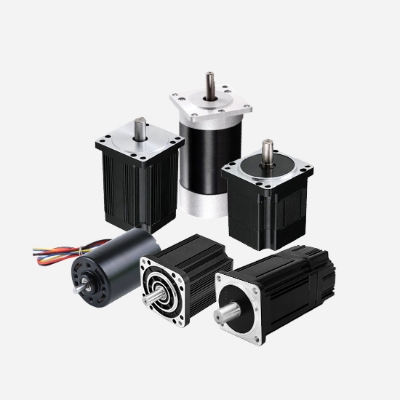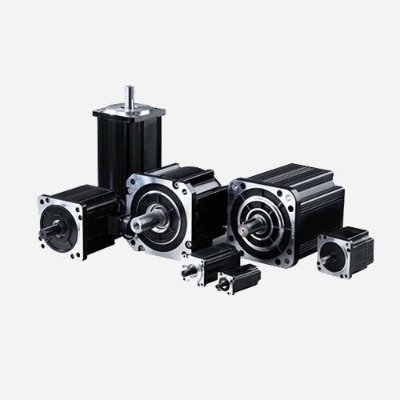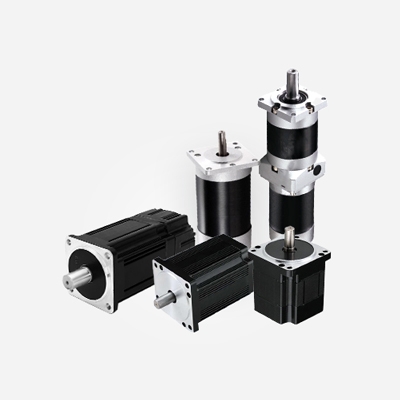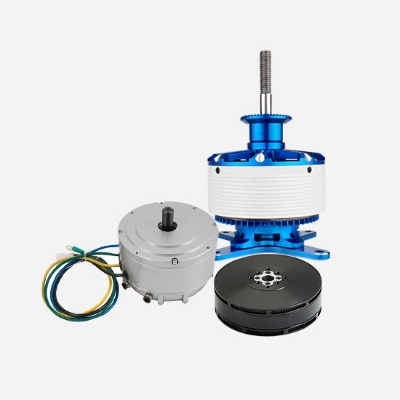Brushless gear motor is a modern motor technology that has been widely successful in a variety of applications. This brushless motor offers higher efficiency, lower maintenance costs, and a longer lifespan than traditional brushed motors. Brushless.com will provide you with an overview of how brushless gear motors work, their advantages, and prospects to help you better understand this important motor technology.
Brushless gear motors are a type of brushless motor that has a reduction mechanism for reducing the speed of the output shaft, thereby increasing the output torque. Brushless gear motors are important in many applications because of their ability to provide precise rotational control, efficient energy utilization, and reliability.
Structure
- Stator: The stator is the stationary part of a brushless gear motor and usually contains the coils and the electronic controller. An electric current is passed through the stator coils to create a rotating magnetic field.
- Rotor: The rotor is the rotating part of a brushless gear motor and is usually made of permanent magnets. The permanent magnets on the rotor interact with the rotating magnetic field of the stator, which generates a torque that pushes the rotor to rotate.
- Reduction Mechanism: The reduction mechanism is used to reduce the speed of the output shaft and increase the output torque. This usually involves a gear system, allowing brushless gear motors to be adapted to the needs of different applications.
- Sensors: Some brushless gear motors are equipped with sensors to monitor the position and speed of the rotor. These sensors provide feedback to help the electronic controller better control the motion of the brushless gearmotor.
Principle of Operation
An electric current passes through the stator coils, creating a rotating magnetic field. This rotating magnetic field is precisely controlled by the electronic controller to make the motion of the brushless gearmotor more precise. Permanent magnets on the rotor interact with the rotating magnetic field of the stator to generate torque that pushes the rotor to rotate. The reduction mechanism reduces the speed of the output shaft and increases the output torque, adapting the motor to the needs of different applications. Sensors monitor the position and speed of the rotor and relay the feedback to the electronic controller. This allows for more precise control of the brushless gearmotor, such as closed-loop control for highly precise rotation.
Areas of Application
- Industrial Automation: In industrial automation, brushless gear motors are commonly used to control the precise motion of robot arms, conveyor belts, and other automation equipment. The high efficiency and programmability of brushless gear motors make them ideal for use in industrial automation.
- Medical: Medical equipment often requires highly precise control and reliability. Brushless gear motors are used in a wide range of surgical equipment, medical imaging equipment, and laboratory instruments to ensure the performance and safety of the equipment.
- Household Appliances: Brushless gear motors play a key role in household appliances, from washing machines to air conditioners. The high efficiency of brushless gear motors reduces energy consumption and improves equipment performance.
- Automotive: Brushless gear motors in electric vehicles (EVs) and hybrid electric vehicles (HEVs) are used to drive the vehicle's tires, braking system, and other key components. The high efficiency of brushless gear motors is critical to the range of electric vehicles.
- Aerospace: In airplanes and satellites, brushless gear motors are used in rudders, landing gears, and other critical control systems to ensure the safe operation of aerospace vehicles.

- Household Machinery: From smart curtains to smart home devices, brushless gear motors can make all kinds of household machinery smarter, more efficient, and more convenient.
- Energy: Brushless gear motors in wind turbines and solar tracking systems help convert renewable energy into electricity, reducing dependence on traditional energy sources and promoting the use of clean energy.
Future Prospects
Electric Mobility: The electric vehicle (EV) and hybrid electric vehicle (HEV) markets are showing rapid growth as the global demand for sustainable transportation continues to increase. Brushless gear motors are very important in the application of electric vehicles and are directly related to the performance and range of EVs. In the future, brushless gear motors will continue to evolve to improve efficiency and reduce size and weight, thereby driving the growth of electric transportation and reducing reliance on traditional fuel vehicles.

Industrial Automation and Robotics: As industrial automation continues to evolve, the use of robotics in areas such as manufacturing, logistics, and warehousing continues to expand. The high efficiency, programmability, and precise control characteristics of brushless gear motors make them ideal for industrial automation and robotics. In the future, these brushless gear motors will continue to play a key role in industrial robots, automated production lines, and warehousing robots, increasing productivity and reducing labor costs.
Medical Equipment and Medical Robotics: The medical equipment sector has very high requirements for high precision, low noise, and reliability. Brushless gear motors in medical equipment applications include surgical equipment, medical imaging equipment, and laboratory instruments. In the future, with the continuous development of medical robotics, brushless gear motors are expected to play an increasing role in surgical robots, rehabilitation robots, and remote surgery to improve the level of medical services.
Smart home and IoT: The market for smart home devices is also growing rapidly, including smart curtains, smart home appliances, and smart security systems. The programmability and intelligence of brushless gear motors make them a core element of smart homes. In the future, these motors will further realize the connection with the Internet of Things, providing users with a smarter and more convenient home experience.
Renewable Energy Sector: The application of brushless gear motors in wind turbines and solar tracking systems will continue to grow as the demand for renewable energy increases. These motors will help improve the efficiency of renewable energy systems, lower energy costs, reduce dependence on traditional energy sources, promote sustainable development, and reduce greenhouse gas emissions.
Aerospace: In the aerospace field, brushless gear motors are used in key control systems such as rudders, landing gears, and missile guidance systems in airplanes. With the continuous development of aircraft technology, brushless gear motors are expected to play a greater role in the aerospace field, improving the precision and safety of flight control.
Brushless gear motors are very promising in the future and will continue to play a key role in various fields. The various advantages of brushless gear motors help improve productivity, reduce energy consumption, promote technological innovation, and improve quality of life while contributing to sustainable development and environmental protection.




